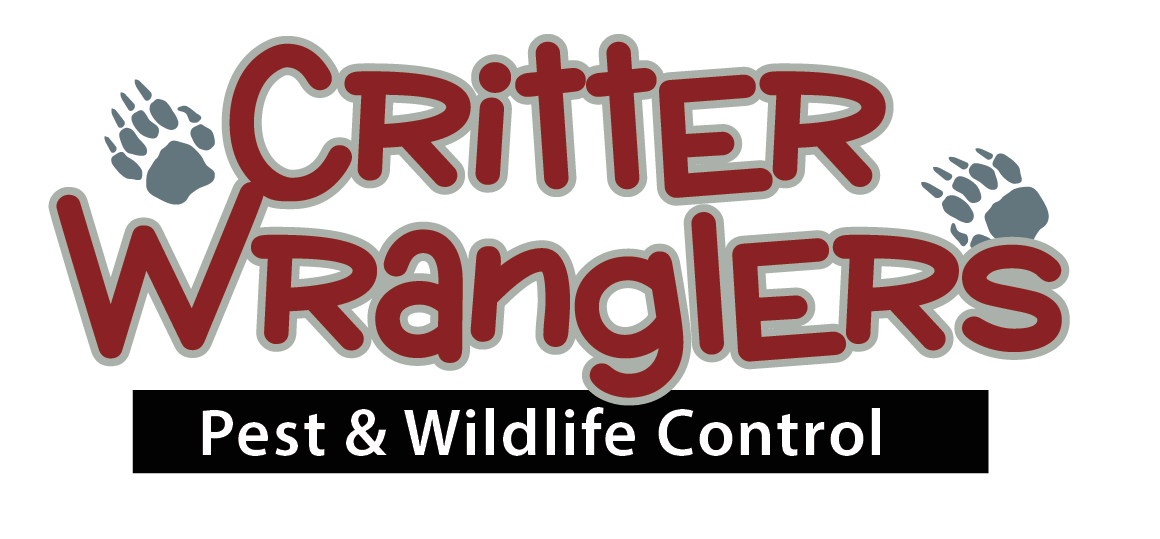Critter Wranglers, LLC Blog
Have an issue? Contact us today
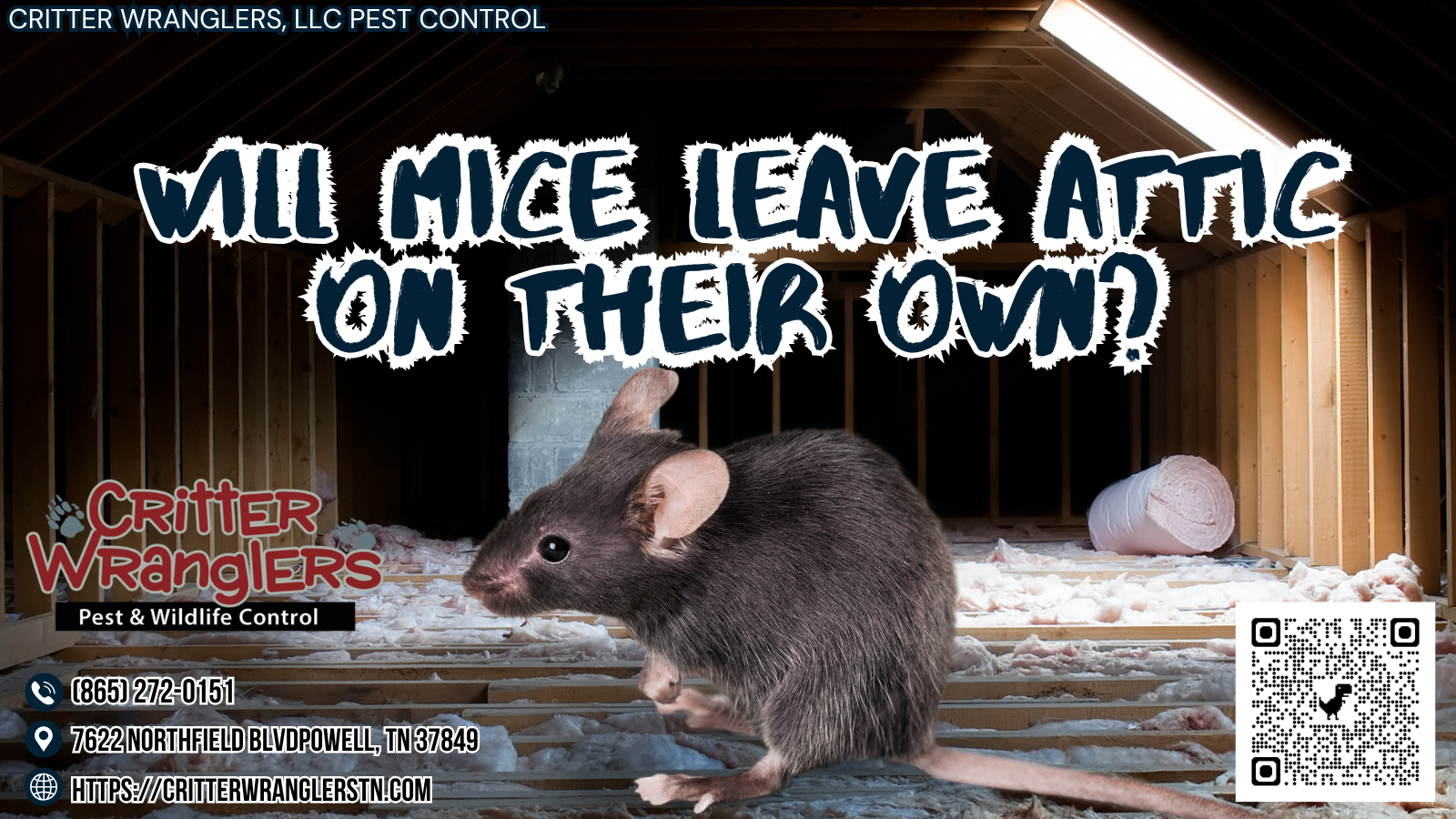
Will Mice Leave Attic on Their Own?
Mice usually do not leave an attic on their own once they have made a nest. They are driven by their need for food, shelter, and safety. Once they settle in, they stay close to available resources. Signs of their presence include droppings, gnawed materials, and noises at night. If conditions, like food sources or safety, change, they might consider leaving, but this is not common. To effectively manage a mouse problem, it is important to take action. Understanding more about their habits can help in creating a long-term solution for control.
Key Article Highlights
- Mice typically do not leave an attic on their own once they find a suitable habitat with food and shelter.
- If conditions remain favorable, such as easy access to food and warmth, mice may stay indefinitely.
- Nocturnal behaviors encourage mice to explore and forage at night, reducing the likelihood of them leaving without intervention.
- Evidence of food sources and nesting materials can entice mice to remain in the attic rather than seeking other locations.
- Early intervention and control strategies are essential to encourage mice to vacate the attic safely and effectively.
Understanding Mouse Behavior
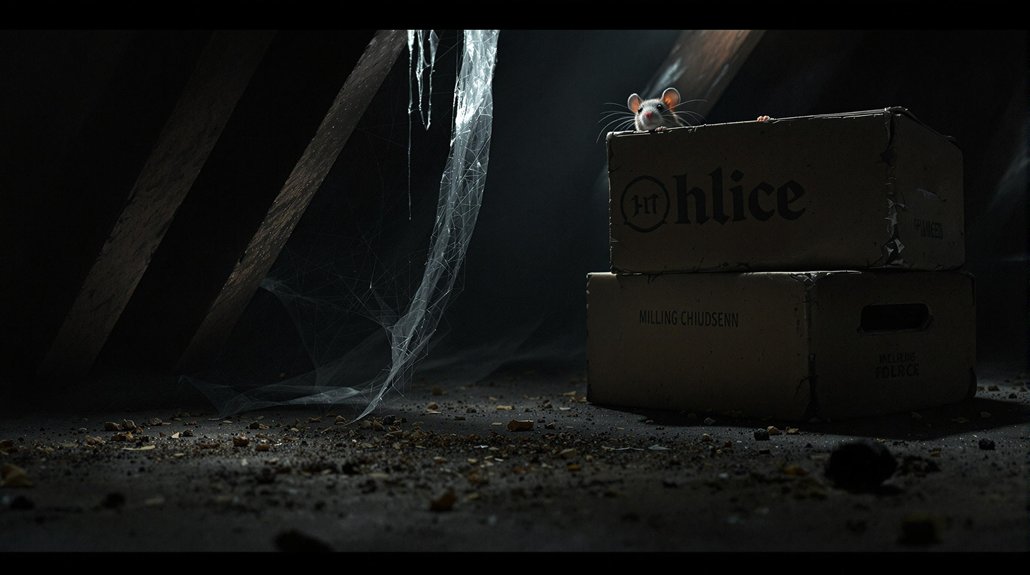
How do mice behave in their natural environment? Mice are guided by strong mouse instincts that help them survive. They prefer habitats that offer food, shelter, and safety. Common habitats include fields, forests, and human homes. Mice often build nests in hidden areas, where they feel secure. They are nocturnal creatures, meaning they are most active at night. This behavior helps them avoid predators and search for food. Mice are also social animals; they live in groups and communicate with squeaks and body language. Understanding their habitat preferences can help in creating a safer environment. By recognizing these natural behaviors, we can find effective ways to manage their presence while ensuring their needs are met.
Signs of a Mouse Infestation
Signs of a mouse infestation can be clear and concerning. Common indicators include droppings and urine, gnawed materials, and strange noises at night. Recognizing these signs early can help in managing the problem effectively.
Droppings and Urine
Mice often leave behind droppings and urine, which are clear indicators of their presence in your attic. Droppings are small, dark, and pellet-shaped, often found in groups. Proper droppings identification is essential for confirming an infestation. Urine may not be easily seen, but it can leave a strong odor and stain surfaces. If you suspect mice, it is important to address these signs quickly. For urine cleanup, use gloves and a mask to protect yourself. Clean the area with a mixture of water and detergent, then disinfect it properly to remove any health risks. Identifying droppings and urine is the first step in managing a mouse problem and ensuring a safe living environment for everyone.
Gnawed Materials
Inspecting your attic for gnawed materials can reveal clear evidence of a mouse infestation. Mice tend to chew on various items in their environment, leaving behind signs of their presence. Look for the following indicators:
- Gnawed insulation – Mice often chew on insulation materials for nesting.
- Chewed wires – They may damage electrical wires, posing a fire hazard.
- Gnawed wood – Wooden beams or structures may show signs of gnawing.
- Damaged boxes – Cardboard boxes can be shredded by mice searching for food.
Identifying these gnawed materials is essential in addressing a mouse problem. Prompt action can help protect your home and guarantee the safety of its occupants.
Noises at Night
Hearing noises at night can be a clear indication of a mouse infestation in your attic. Mice are nocturnal creatures, meaning they are most active during the night. If you hear scratching, scurrying, or squeaking sounds, these may be signs of their presence. Sound identification is important; recognizing these noises can help you confirm whether mice are the source. Common sounds include rustling, gnawing, and thumping. If these noises persist, it is essential to take action. Ignoring them may lead to more significant problems, such as damage to your home or health risks. If you notice these signs, consider contacting a pest control professional to address the issue promptly and effectively.
Factors Influencing Mouse Departure

Several factors can influence whether mice will leave an attic on their own. Understanding these elements can help homeowners manage their pest issues effectively. Key factors include:
- Environmental Conditions: Mice prefer warm, dry places. If the attic becomes too cold or damp, they may seek better shelter.
- Food Availability: If food sources are plentiful in the attic, mice are less likely to leave in search of sustenance.
- Predator Presence: The presence of predators, such as cats or birds of prey, can encourage mice to flee.
- Seasonal Changes: Mice may leave in warmer months when they find more appealing habitats outdoors.
Risks of Mice in the Attic
Mice in the attic can pose serious health risks to homeowners. They can carry diseases that may spread through droppings and urine, creating unsafe living conditions. Additionally, mice can cause significant damage to property by chewing on wires, insulation, and wood.
Health Hazards Involved
While the presence of mice in the attic may seem like a minor inconvenience, it can pose significant health risks to residents. Mice are known carriers of various diseases, which can be transmitted to humans. Understanding these health risks is important for maintaining a safe environment. Here are some key concerns:
- Hantavirus – A serious virus that can cause respiratory issues.
- Leptospirosis – A bacterial disease that may lead to liver and kidney damage.
- Salmonella – A bacteria that can cause food poisoning through contaminated surfaces.
- Lymphocytic choriomeningitis (LCMV) – A viral infection that can affect the central nervous system.
Taking action against mice is essential to prevent disease transmission and protect the health of all residents.
Property Damage Risks
The presence of mice in the attic can lead to significant property damage. Mice are known to chew on various materials, including wood and wires. This chewing can cause serious issues, such as electrical problems and weakened structures. Additionally, mice can damage insulation by tearing it apart to create nests. Insulation damage not only affects comfort but can also lead to higher energy bills. If left unchecked, these problems may require costly repairs. Homeowners should act quickly to remove mice and prevent further damage. Regular inspections can help catch any signs of mice early. Addressing these risks is essential to protect both the home and its value. Taking action can save time, money, and stress in the long run.
Will Mice Leave on Their Own?
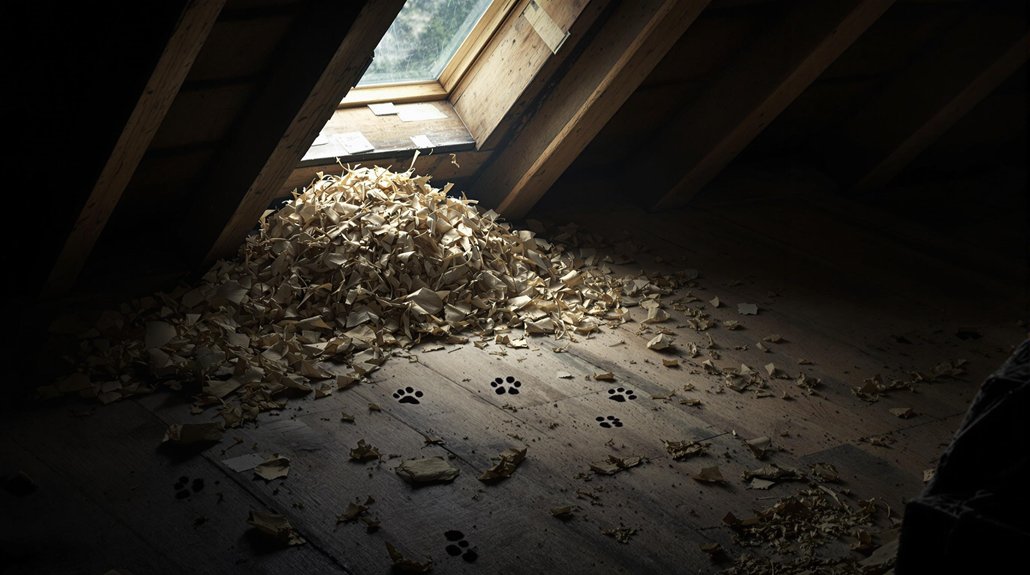
How do mice decide when to leave an attic? Mice often rely on natural migration and seasonal patterns to determine their movements. However, they may not leave solely on their own. Here are four factors that influence their departure:
- Food Supply: Scarcity of food can prompt mice to search for new sources.
- Temperature Changes: Mice seek warmer places during colder months.
- Breeding Season: Mice may leave in search of safer nesting areas for their young.
- Predator Presence: Increased threats from predators can drive them away.
Understanding these factors can help homeowners manage mice effectively, ensuring a safe and comfortable living space for everyone involved.
How Long Do Mice Stay?
Mice typically stay in an attic for varying lengths of time, often ranging from a few weeks to several months. Their presence is influenced by mouse lifespan, which can be around one to two years. Mice often seek shelter during colder months, showing seasonal behavior as they look for warmth and food. If they find a comfortable spot in your attic, they may stay for a long time, especially if there are easy food sources nearby. However, as seasons change, their habits may shift. When spring arrives, mice might venture outside more often, searching for nesting sites. Understanding these patterns can help homeowners recognize when mice are likely to stay longer and when they may leave.
Effective Prevention Strategies
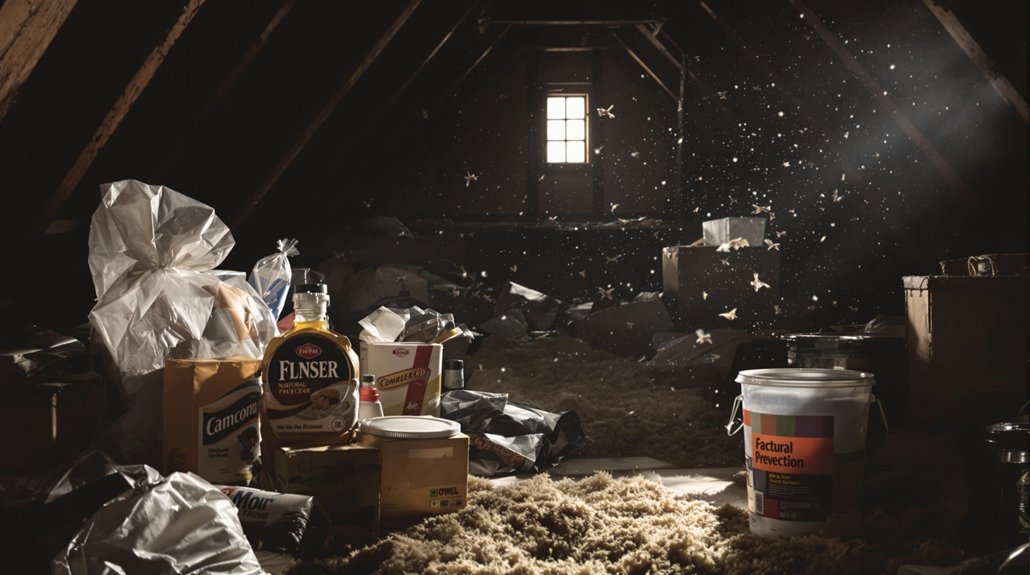
To prevent mice from entering your attic, it is crucial to take proactive measures. Implementing effective preventative measures and habitat modifications can greatly reduce the risk of an infestation. Here are four strategies to take into account:
- Seal Entry Points: Inspect your attic for gaps and holes. Use caulk or steel wool to close these openings.
- Maintain Cleanliness: Keep the attic tidy and free of food sources. Store items in sealed containers.
- Reduce Clutter: Limit the number of items stored in the attic. Clutter provides hiding places for mice.
- Trim Overhanging Branches: Verify tree branches are cut back to prevent mice from accessing your roof.
When to Seek Professional Help
When is it time to call in the experts for a mouse problem? If you see signs of mice, such as droppings or gnaw marks, it may be time to act. A professional assessment can help determine the extent of the issue. If you hear noises in the walls or attic at night, this is another clear sign that mice are present. DIY traps may work for a few mice, but if the problem persists, seeking pest control is essential. Professionals have the tools and knowledge to handle larger infestations safely. They can also help prevent future issues. Remember, acting early can save you time and resources in the long run, ensuring a safe and healthy environment for your home.
Long-term Solutions for Mouse Control
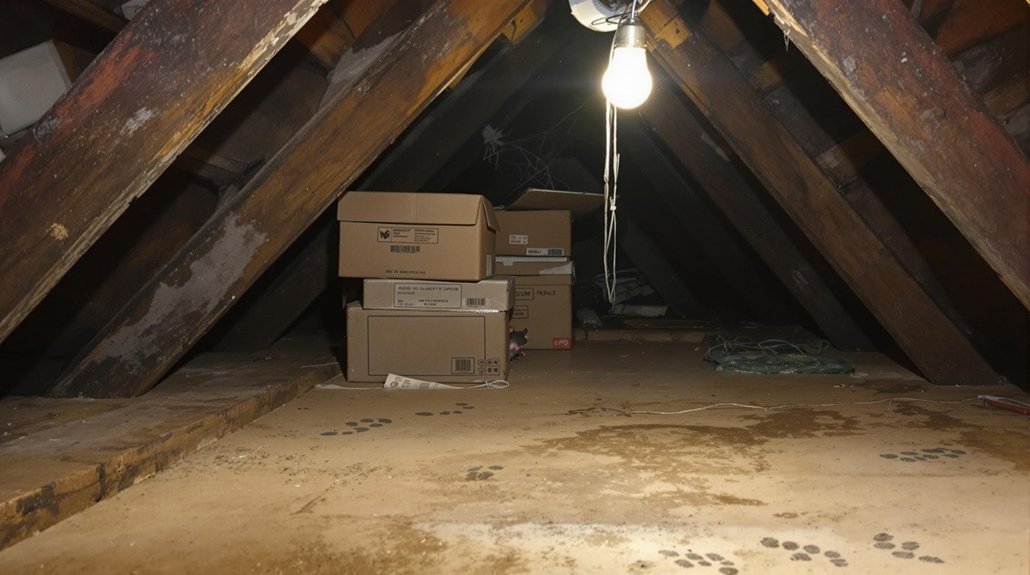
Addressing a mouse problem requires more than just immediate fixes; long-term solutions are essential for maintaining a mouse-free environment. Implementing these strategies can help guarantee that mice do not return:
- Habitat Modification: Keep the area clean and free of food debris. Store food in sealed containers.
- Natural Repellents: Use peppermint oil or vinegar, which can deter mice without harmful chemicals.
- Seal Entry Points: Inspect your home for cracks or holes and seal them to prevent mice from entering.
- Regular Monitoring: Check for signs of mice often, allowing for early detection and response.
Frequently Asked Questions
Can Mice Survive Without Food and Water for Long Periods?
Mice survival is highly dependent on food and water availability. During periods of food scarcity, they can endure short durations without sustenance, but prolonged lack of food and water severely impacts their health and survival chances.
Do Different Mouse Species Behave Differently in Attics?
Different mouse species exhibit varied behaviors in attics. Some are more territorial, while others may be more exploratory. Understanding these species differences is essential for effective management and control of mouse behavior in residential spaces.
What Time of Year Are Mice Most Likely to Invade Attics?
As the leaves turn and autumn whispers its arrival, mice seek refuge, leading to a fall invasion. They instinctively search for winter shelter, making attics prime targets for these small, resourceful creatures during this seasonal change.
How Quickly Can Mice Reproduce in a Confined Space?
Mice can reproduce rapidly, with a mouse reproduction rate of up to 10 litters per year. In confined space dynamics, this rapid breeding can lead to significant infestations in a short period.
Are There Specific Scents That Repel Mice Effectively?
Research shows that peppermint oil can reduce mouse activity by up to 90%. Natural repellents like peppermint and eucalyptus are known for their scent effectiveness, creating an unfavorable environment for mice while remaining safe for humans.
